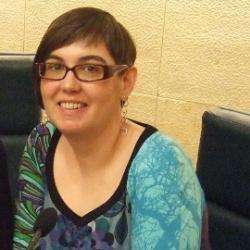The short but intense visit the Mikhailovsky Ballet is paying to London this Easter is showing the high standards the company can reach in both classical and contemporary ballet. In addition to splendid versions of Giselle, Don Quixote and Laurencia, the St Petersburg-based ballet company has also offered two bills with works by its acclaimed artistic director Nacho Duato. The first of the two programmes, comprising the much-admired ballet Multiplicity. Forms of Silence and Emptiness, enjoyed great success on 5 April.
A ballet in two acts, it was commissioned to the Spanish choreographer by the Deutsches Nationaltheater in Weimar in 1999, when the city was made European Capital of Culture. In homage to the cultural past of the town, Duato decided to base his work in the life and music of Johann Sebastian Bach, who lived and worked there for about ten years. The ballet earned immediate praise by audience and critics alike and brought the prestigious Benois de la Danse award to its creator some months after the première.
The inspiration in Bach is unquestionably the most prominent feature in Multiplicity. Forms of Silence and Emptiness. The score is entirely made of his music, the choreography springs directly from the moods evoked by his notes, and the elegant costumes, thought highly stylized, unequivocally suggest the period. Bach himself, unmistakably dressed in a white wig, is a character in the ballet. His life, music and thoughts are the core substance of the piece, though no narrative is delineated. In accordance to the fragmented quality of the score, made of a collection of passages from Bach’s immense creative output, the ballet is episodic and at times highly symbolic.
The first part of the ballet, called “Multiplicity”, seems to focus on his biography. His facets of composer, musician, husband and father are depicted through a series of sketches outlining his life. Thus, the exuberant opening chorus from the cantata “Aeolus Propitiated”, BWV 205, is choreographed to highlight his musical vitality, for instance. The dancers, sat in chairs and arranged as the instruments of an orchestra, seem to respond to Bach’s conducting baton. Similarly, in one of the most beautiful numbers of the ballet, a duo to the Prelude from the Cello Suite no. 1 in G major, BWV 1007, a ballerina plays the role of a cello. Her sinuous movements simulating the notes coming from the instrument are modeled by Bach’s playing hands. In a different mood, the Allegro from the Brandenburg Concerto no. 3 in G major, BWV 1023, provides the background for the quick, youthful and playful choreography that anticipates the tender numbers devoted to evoking Bach’s family life. The Notebook for Anna Magdalena, BWV 114/115, and the Wedding Cantata, BWV 202, sound while the choreography explores husband devotion and paternal love.
In contrast to the biographical details of “Multiplicity”, the second act of the ballet, “Forms of Silence and Emptiness”, concentrates on Bach’s innermost thoughts and anxieties. The musical excerpts predominantly belong to his organ and chamber works. To the Toccata in D minor, BWV 538/1, feelings of guilt arise in a restless choreography for six male dancers dressed in long black skirts. Likewise, the women in the following number, performed to the Trio Sonata for organ no. 6, BWV 530, look full of insecurities and fears. Their discomfort emerges though a set of mechanical and distorted movements. Following the atmosphere of distress they introduce, the last passages of the ballet refer to the theme of death. A female dancer with a white mask and in a long black dress embodies its presence. At first, her power is menacing. In a trio, Bach fights with her (fiercely but in vain) to prevent the death of a beloved woman. However, in the sad and sorrowful meditation that follows, she changes from a dreadful force into an inevitable fate. By the time she takes Bach with her, the audience is ready to witness a peaceful aftermath. In a reversal of the motif of descending women that rhythmically fill the Kingdom of Shades in La Bayadère, a line of ascending dancers suggest here the idea of an everlasting source of inspiration emanating from the dead body of the composer. With this powerful image, Duato closes his ballet, summarizing the reverential admiration for the German composer that has inspired the entire piece.
At the London Coliseum, the Mikhailovsky’s dancers performed this respectful and rich exploration of Bach’s personality with great command, refined technique and devoted vitality. Marat Shemiunov played the role of Bach with poise and quiet elegance. Sabina Yapparova danced with plastic and measured lyricism, especially in the cello duet. Polina Semionova brought peaceful assurance to her role as the death. And, ultimately, the whole company proved to be an excellent vehicle for a piece of contemporary dance that celebrates beauty, harmony and artistic genius.


